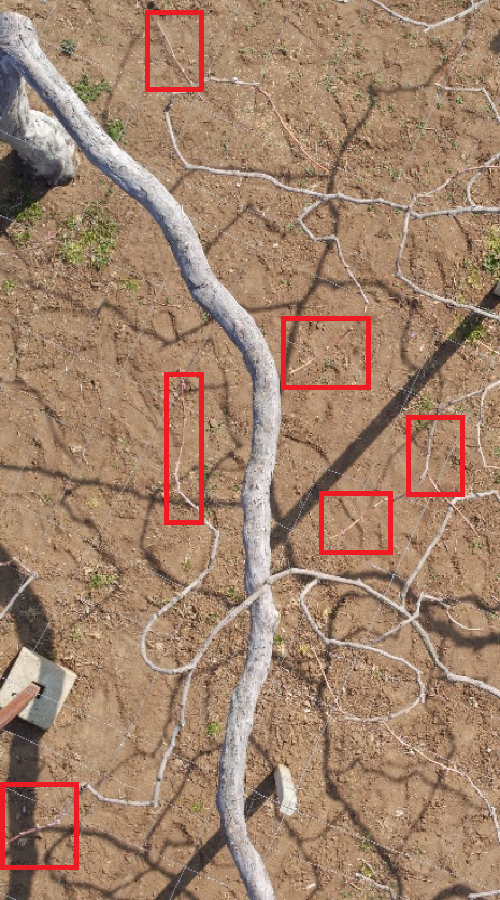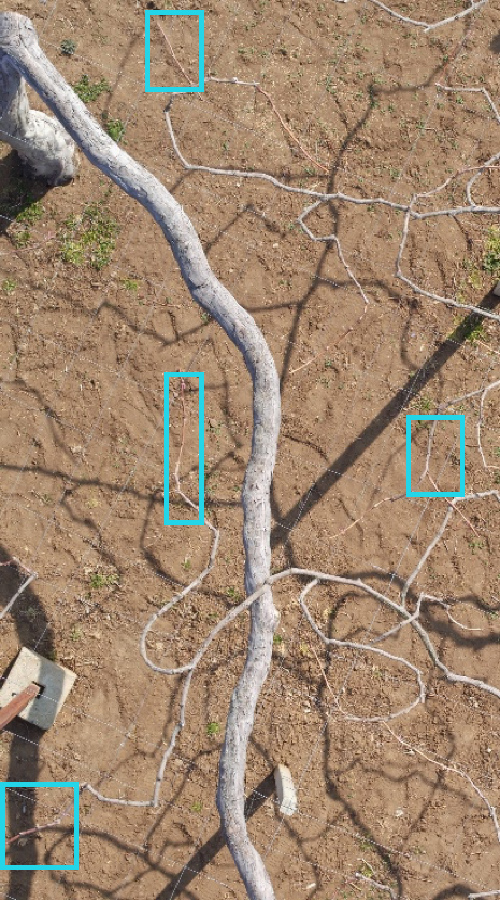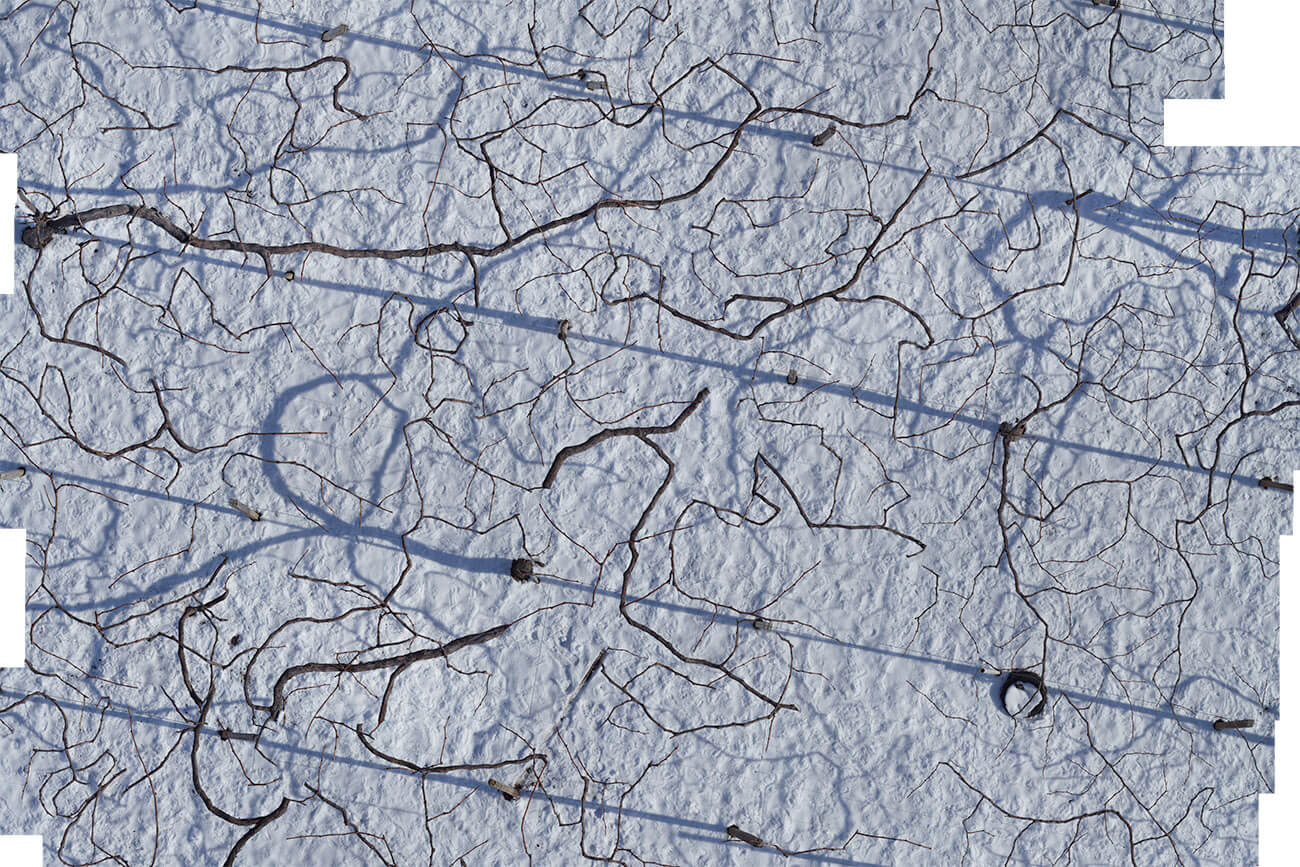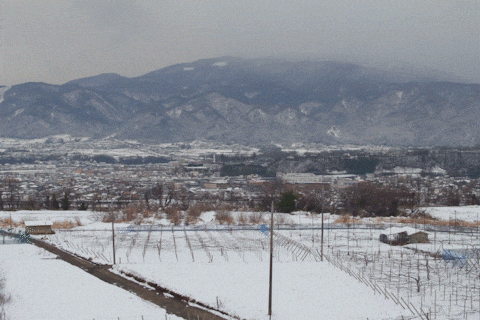Previous post.「Fall, grape harvest and research improvements」Continuing from the previous section, we will tell you about the “Research on the Efficiency of Grape Cultivation” conducted with JA in the spring of 2018 for the purpose of improving the efficiency of grape branch identification work and maximizing field profits.
The winter plots after the grapes have been harvested, do you know what happens at this time of year? Farming is not “over after the harvest,” as the previous article said, but rather, it’s in the wintertime and that’s when you have to do it. There are many things that don’t happen.
In this final article, we tell you the state of winter work that becomes the reason why the branch of the grape grows horizontally, and what kind of shape the research and development that we have done in our company has finally become.
A view of a vineyard in winter
Winter is coming and Yamanashi Prefecture is enveloped in dry air along with a severe cold snap. It becomes frosty in the morning, and all the leaves that were vibrant in summer wither and fall.
Depending on the year, it is not uncommon to see snow all around. The pruning work of the branch which has a great influence on the growth of the next year in the vineyard of this winter exposed to the severe cold. ” over a period of several months.
In this study, we have focused on “identification of the grapevine” because this pruning is the most important part of the work that affects the planned production of grapes (consistent quality and yield).
Pruning is best done at this time of year when the leaves are dead and fall off to the trunk and branches only, which is easy to see, and is a time-consuming process each year.
In addition to the different planting methods, the growth of the branches varies depending on the age and variety of the grapes, so it is necessary to respond to each of them in an appropriate manner.
In addition, this work has many implications for the vines, such as “sacrificial bud pruning” to prevent the vines from dying during the winter months.
It is no exaggeration to say that this pruning, done while observing the state of the vine, is the work that determines the production of the grapes in a year, as mentioned above.
A wrong decision can cause the tree to die, so it is important to make the right decision about which branches and buds to remove. It is essential. To make the right decision, of course, yes, “experience” is required.
After pruning, the tree is pruned, the branches are “budded” to produce new buds even in the middle of the branch, the bark is removed to protect the tree from pests and diseases, and the tree is then “induced” to take shape.
Normally, it is easy to imagine that the branches of a tree grow upwards as well as sideways. But think of a grapevine.
Don’t you imagine the branches growing from the tree and spreading out horizontally along the shelf? The reason for this is in the attraction of these branches. The branches are anchored to the shelf parallel to the ground while pointing the new buds to the sky, so that they can get a good amount of sunlight and growth. It’s a method that makes sense to encourage.
This process will allow us to see the grapes grow quickly when the weather warms up again. It can be done. Of course, no matter how cold it is or how much the snow doesn’t melt, farmers are always thinking about the next season’s grapes. Working under cold weather. Can you see from the video below how cold it is in a vineyard located in the mountains?
Results of software development for branch identification
Over the past year, we have continued to improve our system, starting with the selection of drones and cameras, demonstrating two different architectures, 3D point cloud data processing and AI deep learning, in multiple fields, and reviewing our research methods and improving our system.
As you can see in the video above, we have manually merged the photos from the drones into a large photo of the entire field and used AI deep learning to identify branches, and we have been able to get the final recognition rate as high as over 60%.
- 新枝7本 熟練者による正解データ

- 新枝4本 AIによる枝判別

In research and development, we try to find the optimal solution by trying to find the best combination of performance and usage of each device.
For the AI deep learning used in this study, we will be able to use more data for the correct answer in the future. We have been able to build a mechanism to increase the discrimination rate. The recognition rate in AI deep learning decision results using teacher data from the experience of a skilled person is Our goal is to eventually get closer to 100%.
Even in 3D point cloud data processing, which was not chosen for this development in terms of cost and automatic navigation and cameras, there are now feasible ideas, such as mounting the iPhone 11 pro on a drone to obtain valid image data that can be measured at depth.

The Future of Agriculture and Technology
Our research over the past year on improving the efficiency of grape cultivation has allowed us to play a major part in applying the latest technology to the agricultural sector.
In addition, technological development has made it easier to obtain high-performance equipment and improve data, and software development has made it possible to incorporate new architectures for discrimination, so there is great potential for future development.
Eventually, we would like to make agriculture more efficient through the power of technology, so that we can pioneer innovations that can compete with the shortage of agricultural workers and the aging of the population.


